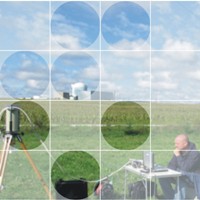|
LOW AND INTERMEDIATE ENERGY PHYSICS - F2
Departmental web pages Head of Department Secretary Fundamental research in nuclear physics is carried out within the Hadron Systems Structure group. At the MAMI laboratory, (Mainz, Germany), Jefferson Lab (Newport News, USA) and the MIT-Bates (Boston, ZDA) laboratory the group's memebrs participate in the planning, execution and analysis of coincidence experiments with polarised electron beams and polarised targets. At the iThemba LABS in Cape Town, South Africa, we have recently carried out high-energy gamma-ray measurements with the AFRODITE HPGe detector array in order to study radiative nuclear capture of protons on a 208-Pb target. This was a world's first spectroscopic measurement of 20 Mev photons with high resolution detectors. The resolution was improved by a factor of more than 10 with regard to earlier measurements. |
J. Stefan Institute, Jamova 39, 1000 Ljubljana, Slovenia, Telephone: +386 1 477 39 00 |

